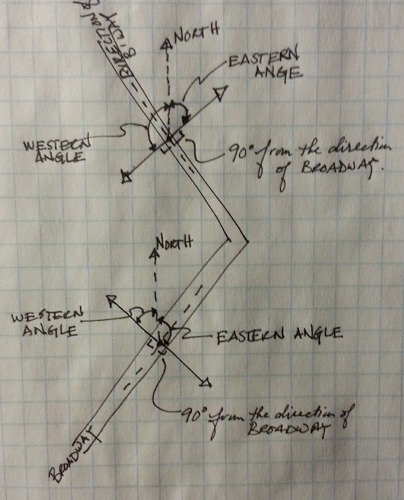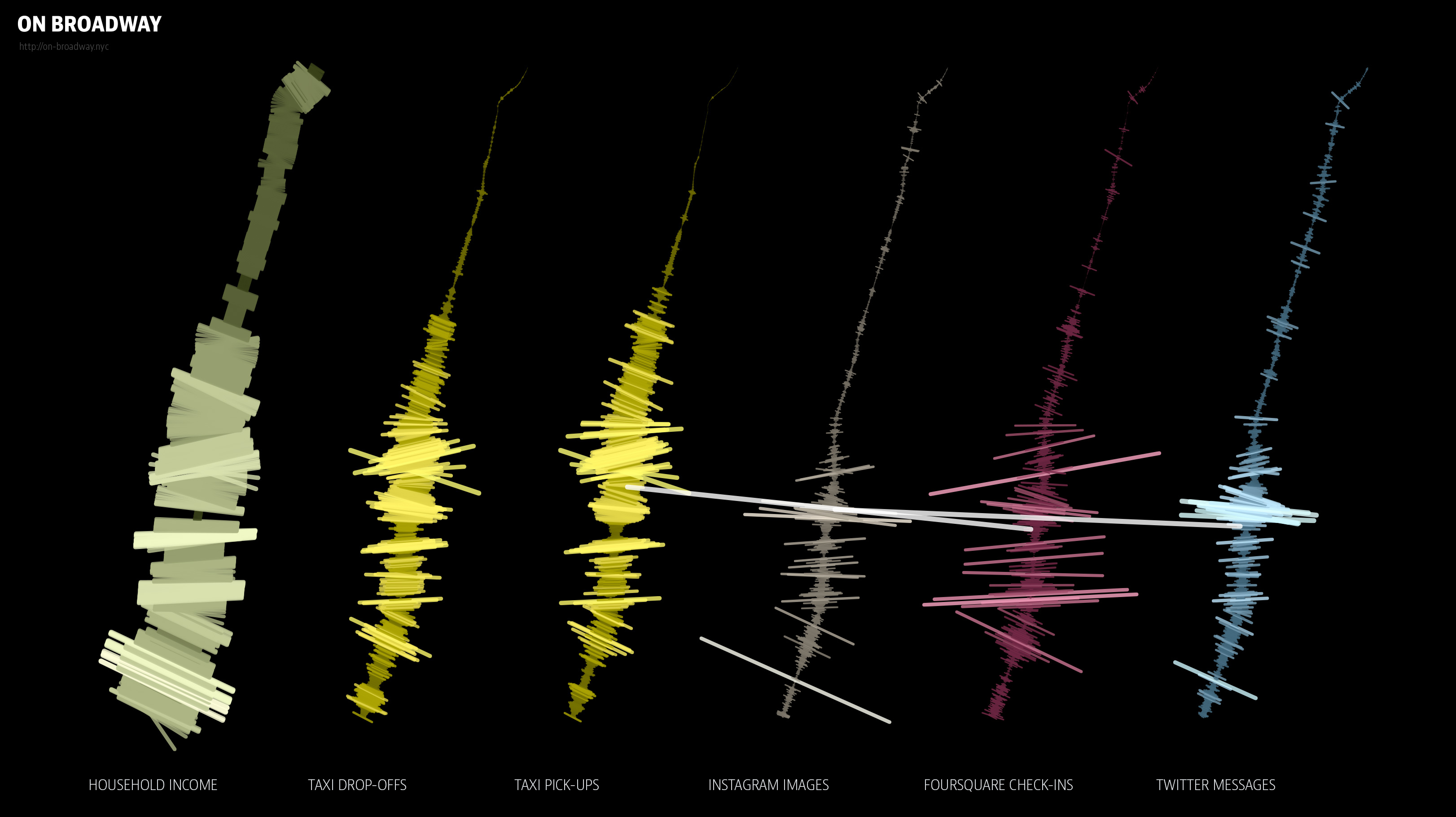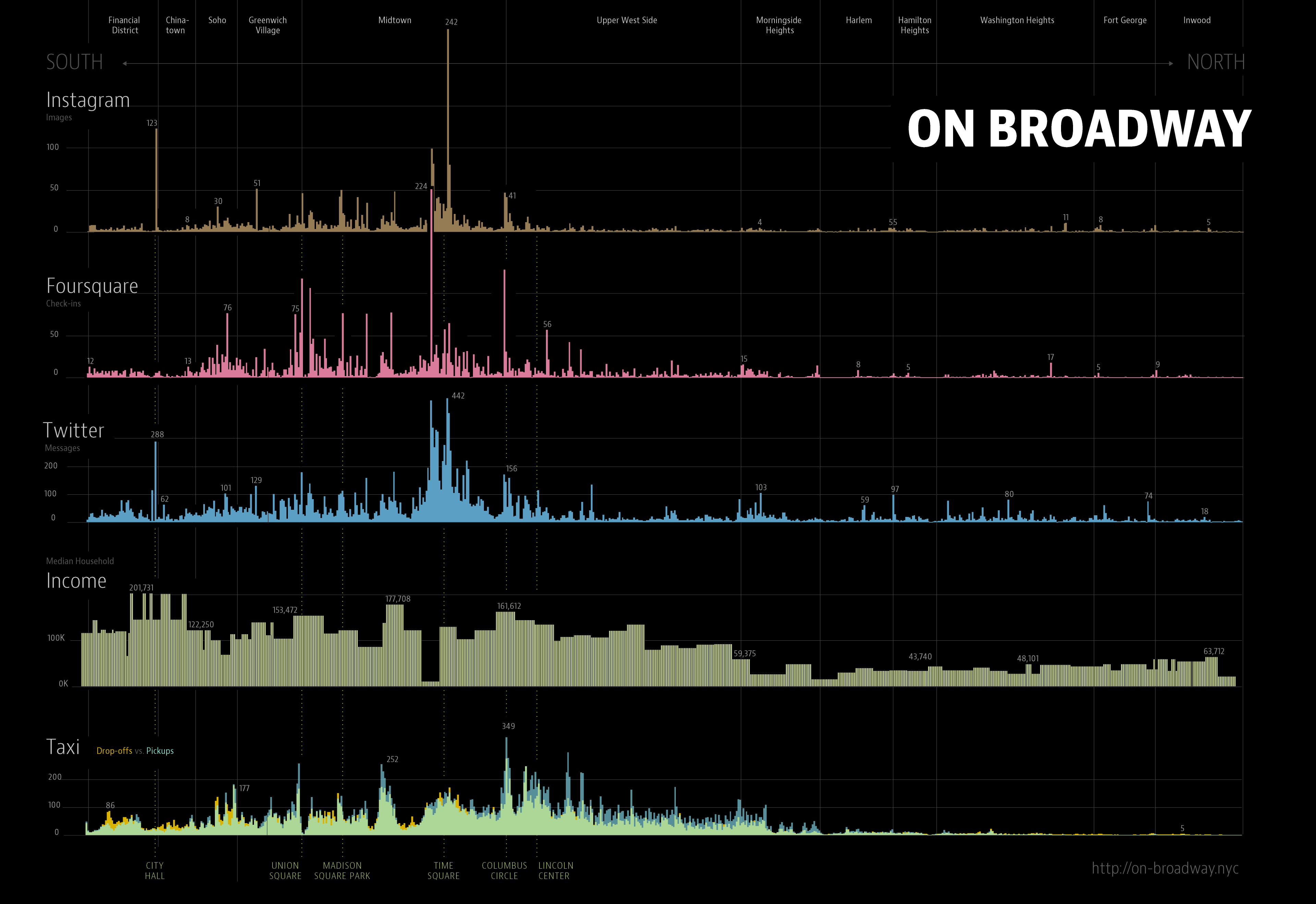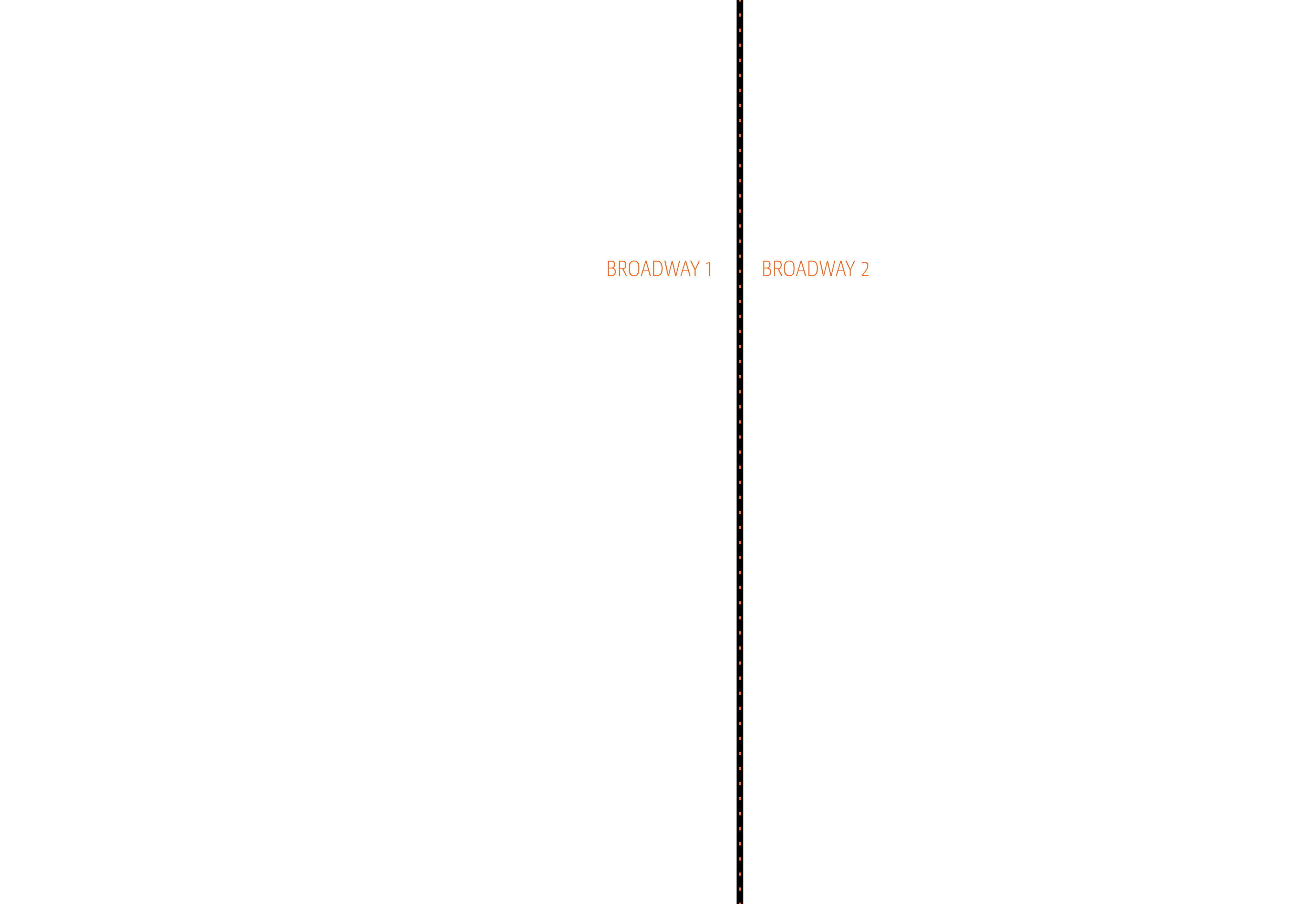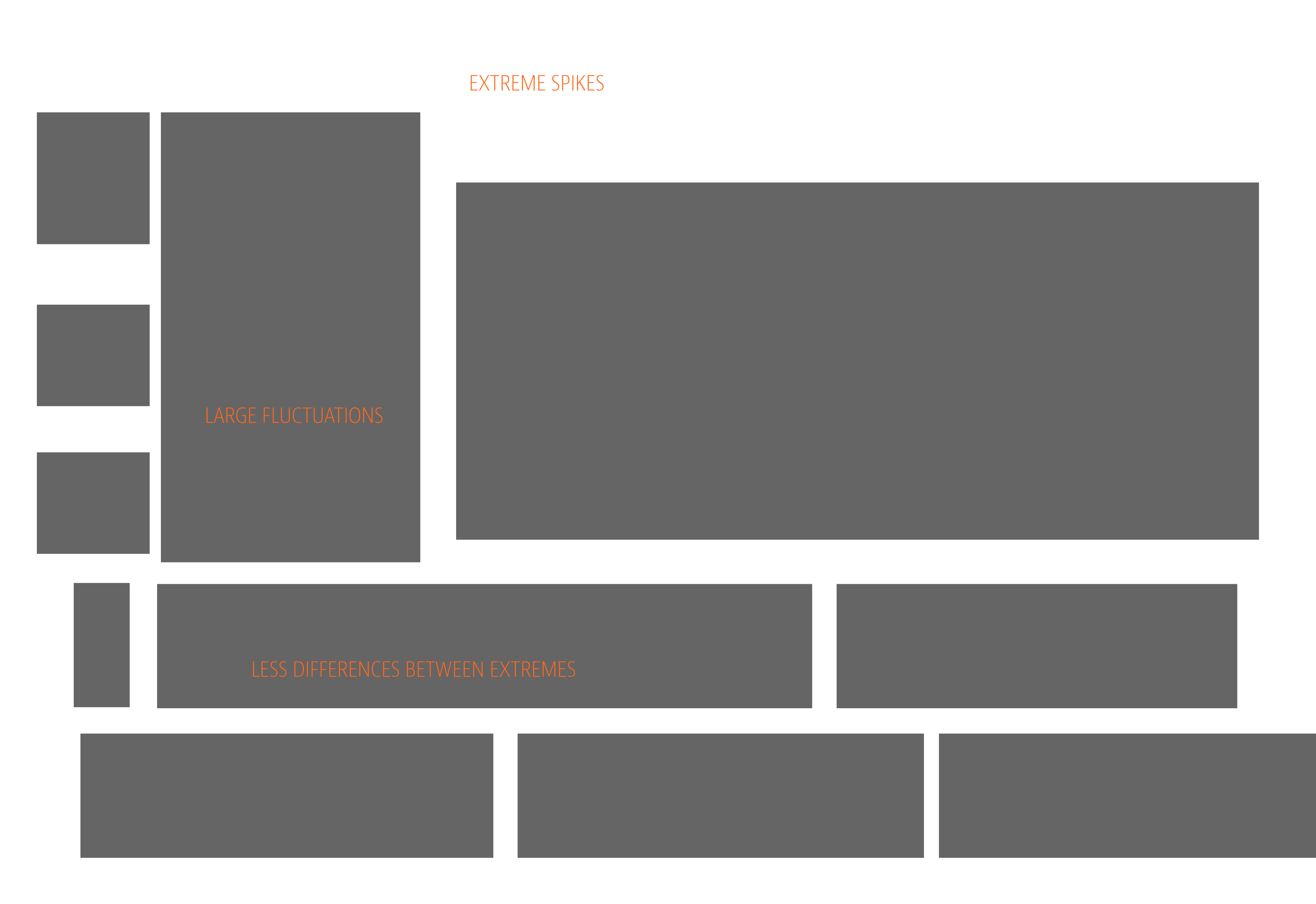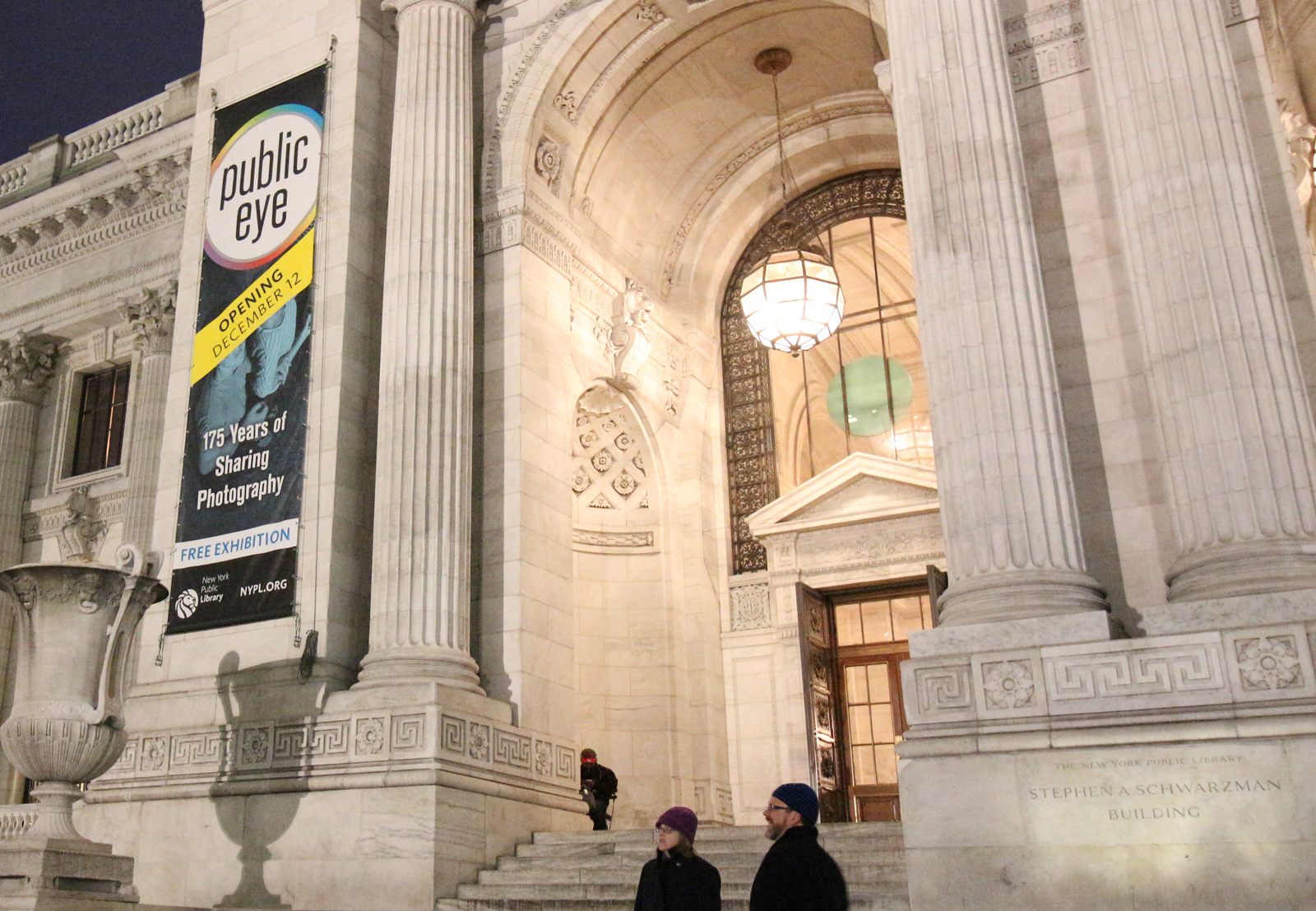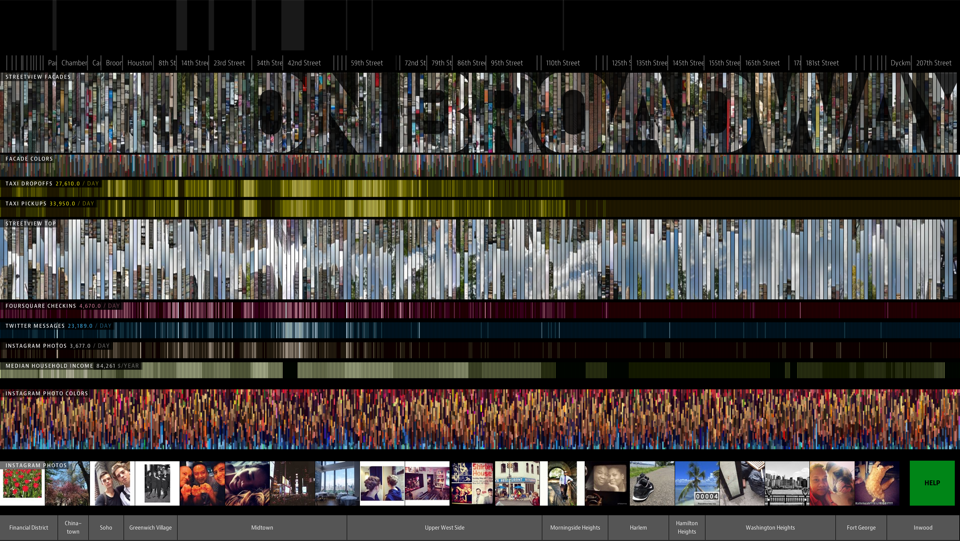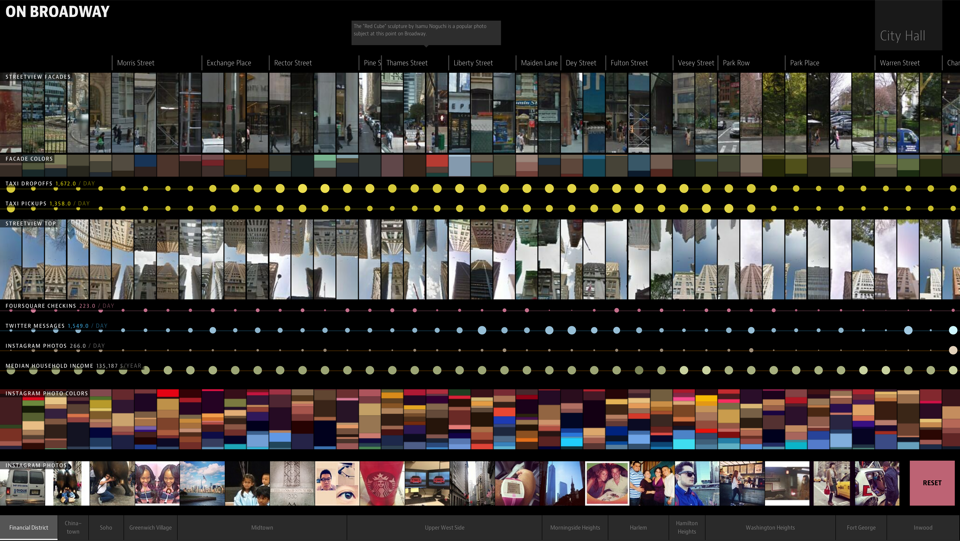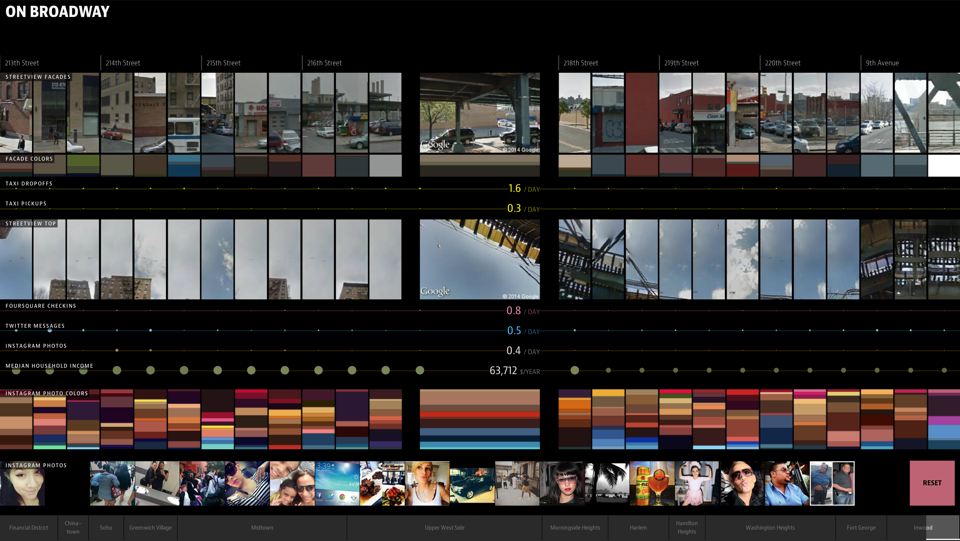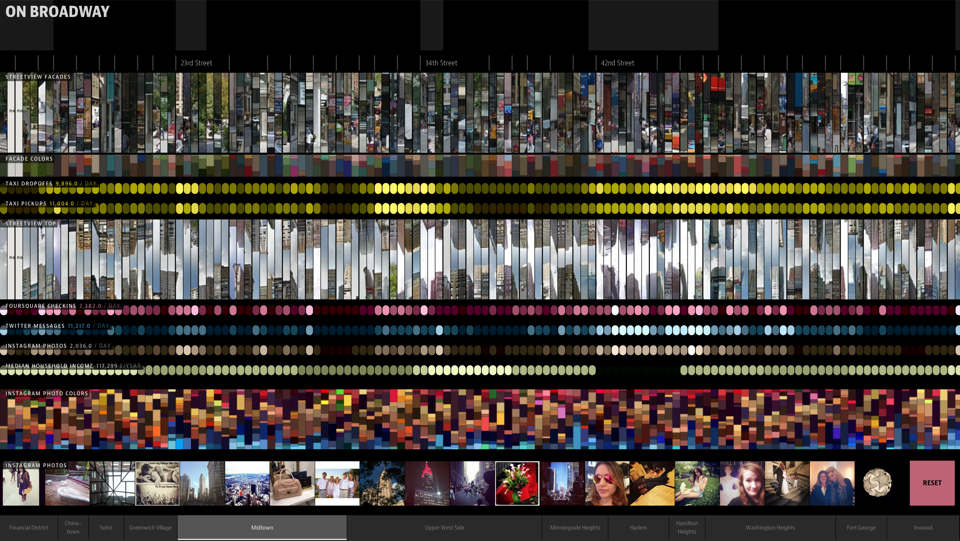Representing the modern city
Modern writers, painters, photographers, filmmakers and digital artists have created many fascinating representations of the city life. Paintings of Paris boulevards and cafés by Pissarro and Renoir, photomontages by Berlin Dada artists, Broadway Boogie-Woogie by Piet Mondrian, Spider-Man comics (Stan Lee and Steve Ditko), Playtime by Jacques Tati, and Locals and Tourists data maps by Eric Fischer are just some of the classic examples of artists encountering the city.
The artwork which directly inspired our project is Every Building on the Sunset Strip by Edward Ruscha (1966). It is an artist book which unfolds to 25 feet (8.33 meters) to show continuous photographic views of both sides of a 1.5 mile section of Sunset Boulevard.


